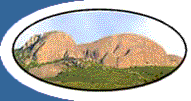SPRING is in the air, as many of us will once again be tempted to dust off our “weigh less” scales, diet, and swipe gym membership cards and actually venture beyond the reception desk (yes, you know who you are).
Easy enough – but to give up on tea and especially coffee. Unthinkable.
As habits go, it’s not a new one. At the Cape the early settlers also drank tea and coffee. The old koffiekan on a wood stove springs to mind.
At the time, Western Europe’s love affair with the cocoa bean had just started. I never thought of the early settlers at the Cape drinking hot chocolate, until a friend pointed out – in a coffee shop – that many of the old estate inventories included chocolaatkopjes.
Simon van der Stel – apart from being the Governor of the Cape – also held sway as a farmer, wine maker, and by proxy, a trader.
One of the people he employed to sell farm produce to passing ships, and in turn buy goods off the return fleet, was the Chinese Christian, Abraham Vijf.
Some of the goods Vijf sold on behalf of Van der Stel were chocolaatkopjes met pierings, theegoed and coffigoet.
In 1734 Anna de Koning’s inventory of household goods showed that she owned two chokolaat kannen and twenty-three chokolade kopjes.
Her husband Olaf Bergh had bought Constantia after Van der Stel’s death, and in 1734 the widow De Koning – a freed slave - was a very wealthy and influential woman.
I recently found another cocoa drinker in Simondium - the former heemraad Jan Christoffel Schabort of the farm Meerrust. When he died in 1746, his possessions included a chocolaat cannetjie.
Inhabitants at the Cape could import cocoa, but many bought the beans off ships in Table Bay harbour.
The first consignment of cocoa beans arrived in Seville, Spain, in 1585 and very soon the very expensive Mexican bean became the currency of wealth and sophistication.
It did not take long before commercial plantings could be found in South American and the East.
By the early 18th century prices had begun to fall which made the drink more accessible to the middle class, but the first solid chocolate bar would only appear more than a century later.
At the Cape in the 18th century, cocoa was still the preserve of the rich. Tea and coffee however were not. By all accounts we drank it by the buckets full, according to Hester Claassens in her book Die Geskiedenis van Boerekos.
Pieter Kolbe was a visitor at the Cape in the early 1700s and noted that the Cape residents bought coffee from passing ships.
Coffeehouses had also opened, but were banned in 1733 because proprietors used their establishments to sell liquor as well. The ban was still in place in 1780, but had been lifted by 1800.
Carl Thunberg wrote that the Dutch drank weak bitter coffee on the ships - between 10 and 12 cups at a time. The beans were lightly roasted and drank without milk. The weak state of the brew was possibly related to the cost of the beans.
Otto Menzel, who worked at the Cape between 1733 and 1741, wrote that nobody left the breakfast table without drinking at least half a dozen cups of weak tea or coffee. Women especially had poor teeth because it was the custom at the time to sip tea through a lump of sugar held in the mouth.
The Dutch had established coffee plantations in Ceylon (Sri Lanka) since 1616, and by the late 1600s also had coffee plantings in Java.
So the VOC’s returning fleets would certainly have carried a lot of coffee beans along with spices and other treasures from the East.
In 1798 Lady Anne Barnard visited the Cape, and she too commented on the habit of drinking this beverage.
“We found here what is universal in this country – a constant drinking of coffee.”
By the early 1800s the traditional cup of boeretroos – coffee – had become the preferred beverage at the Cape although tea remained popular in the interior.
Some claim it was to camouflage the taste of brackish water. Cost and availability would also have played a role, and hence the popularity of rooibos and honey bush tea.
So - give up coffee or tea, and dare I add chocolate, for the spring diet? I am not so sure. By now I think the habit is coded in our DNA. Let’s try moderation instead.


